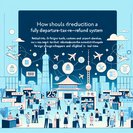
China’s southern technology powerhouse, Shenzhen, reported 152,000 visa-free entries in the first ten months of 2025—up 160.3 percent year-on-year—according to figures released on 27 October by the municipal immigration inspection station. Total foreign passenger arrivals reached 531,000, a 54.6 percent increase from the same period in 2024.
Officials attribute the surge to Beijing’s rolling expansion of visa-free access and to the city’s proximity to Hong Kong and Macau within the Greater Bay Area (GBA). Mainland authorities have simplified same-day re-entry procedures at Futian and West Kowloon stations, enabling foreign executives to base themselves in Hong Kong while making frequent day-trips to Shenzhen’s tech parks.
Malaysia, South Korea, Japan, Vietnam and Singapore ranked as the top source markets. Hoteliers report weekday occupancy above 80 percent in Futian and Nanshan districts, fuelled by semiconductor supply-chain visits and start-up fundraising events. Retail analysts note that duty-free electronics sales at Luohu Port doubled during China’s Golden Week in early October.
The local government is capitalising on momentum by piloting a “GBA Business Traveller Card,” allowing accredited foreign professionals multiple-entry clearance lanes and digital customs declarations. If successful, the model could be replicated in Guangzhou and Zhuhai, further knitting together the cross-border mega-region.
Industry observers caution that continued growth hinges on sufficient air-lift; Shenzhen Bao’an International Airport has ordered slots for 18 additional wide-body flights in 2026 to handle rising international demand.
Officials attribute the surge to Beijing’s rolling expansion of visa-free access and to the city’s proximity to Hong Kong and Macau within the Greater Bay Area (GBA). Mainland authorities have simplified same-day re-entry procedures at Futian and West Kowloon stations, enabling foreign executives to base themselves in Hong Kong while making frequent day-trips to Shenzhen’s tech parks.
Malaysia, South Korea, Japan, Vietnam and Singapore ranked as the top source markets. Hoteliers report weekday occupancy above 80 percent in Futian and Nanshan districts, fuelled by semiconductor supply-chain visits and start-up fundraising events. Retail analysts note that duty-free electronics sales at Luohu Port doubled during China’s Golden Week in early October.
The local government is capitalising on momentum by piloting a “GBA Business Traveller Card,” allowing accredited foreign professionals multiple-entry clearance lanes and digital customs declarations. If successful, the model could be replicated in Guangzhou and Zhuhai, further knitting together the cross-border mega-region.
Industry observers caution that continued growth hinges on sufficient air-lift; Shenzhen Bao’an International Airport has ordered slots for 18 additional wide-body flights in 2026 to handle rising international demand.








